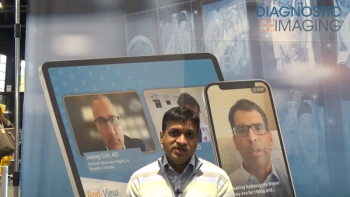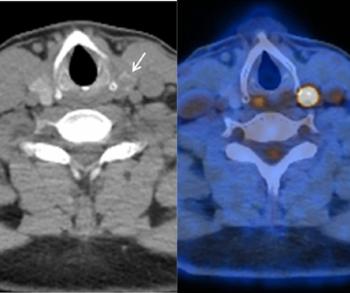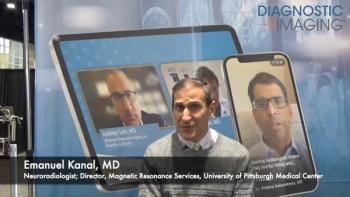
Siemens to display fixed-angle version of E.Cam gamma camera at SNM show
New model cuts price of flagship systemThe nuclear medicine group of Siemens Medical Systems plans to unveil a new fixed-angle version of its premium E.Cam gamma camera at next week's Society of Nuclear Medicine meeting in San Antonio. Going with
New model cuts price of flagship system
The nuclear medicine group of Siemens Medical Systems plans to unveil a new fixed-angle version of its premium E.Cam gamma camera at next week's Society of Nuclear Medicine meeting in San Antonio. Going with a fixed gantry enables Siemens to slash thousands of dollars from the price of an E.Cam, according to Randy Weatherhead, vice president of marketing for the Hoffman Estates, IL, division.
Siemens debuted E.Cam at last year's SNM meeting as a full-featured, variable-angle, dual-head gamma camera (SCAN 6/5/96). Siemens is now in full production of E.Cam systems, manufacturing about 25 a month, Weatherhead said.
Variable-angle cameras rose to prominence because their movable detector heads enable clinicians to conduct cardiac studies with the heads in the 90 configuration and oncology and whole-body studies in the 180 configuration. Of the 800 dual-head gamma cameras sold worldwide, some 500 are variable-angle systems, according to Weatherhead.
The fixed-angle version of E.Cam targets the segment that accounts for sales of 300 fixed-angle systems a year. Specialists buying fixed-angle 180 cameras are primarily interested in oncology applications and don't need to conduct cardiac studies. Dispensing with the variable-angle gantry enables Siemens to shave about $50,000 off the price of an E.Cam, according to Weatherhead.
"We can provide a better value for people who aren't interested in both a 90 and 180," he said. "We think that E.Cam, being a new-generation product, will be very competitive in that segment."
Aside from the differences in gantry design, the fixed-angle E.Cam is otherwise identical to the variable-angle E.Cam. For example, the fixed E.Cam will be upgradable to coincidence detection when Siemens has 510(k) clearance for that high-energy imaging technique.
Siemens will also display its latest work in high-energy imaging at its SNM booth. The company plans to offer a range of high-energy options, from high-energy imaging with PET cameras to low-cost coincidence detection using sodium iodide detectors on gamma cameras. Siemens is also working with cyclotron developer CTI on coincidence imaging with detectors made from a hybrid material of LSO/YSO, according to Weatherhead.
The work on LSO/YSO detectors is intriguing because LSO has a density and photon-stopping power similar to BGO, the detector material used in PET cameras, while YSO is good for low-energy ranges such as those used in SPECT, he said. Combining the two could result in a detector that combines the best of both worlds.
Finally, Siemens is planning to feature nuclear medicine imaging protocols written using the Interactive Data Language (IDL), a software programming environment that is commonly used in other fields. Siemens has developed interfaces to the database of its Power Macintosh-based Icon workstation to allow users to write imaging protocols in IDL. Such protocols can then be ported to other platforms such as Unix workstations, Weatherhead said.
Newsletter
Stay at the forefront of radiology with the Diagnostic Imaging newsletter, delivering the latest news, clinical insights, and imaging advancements for today’s radiologists.



























